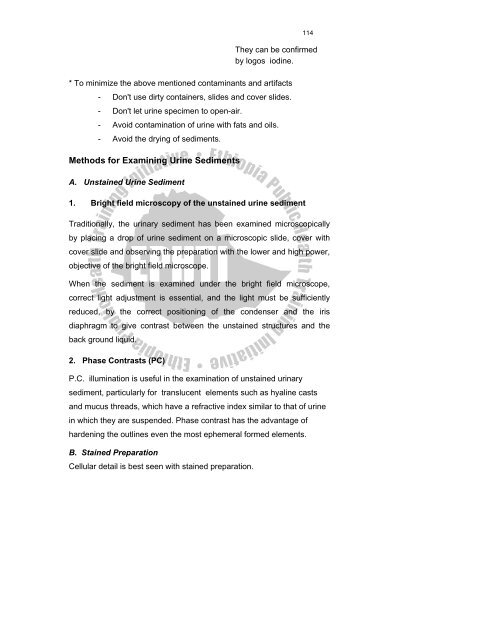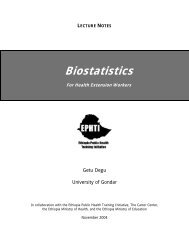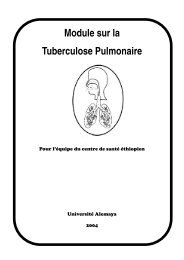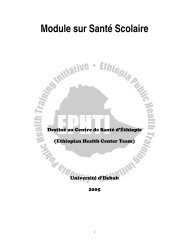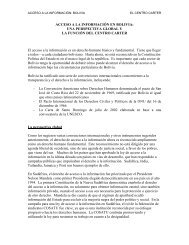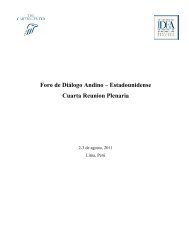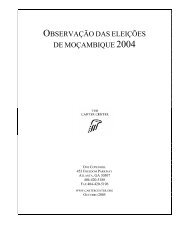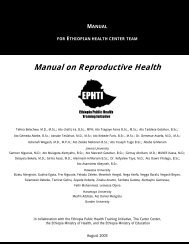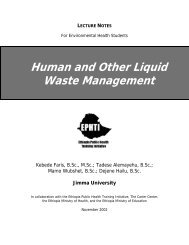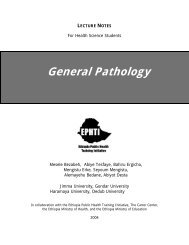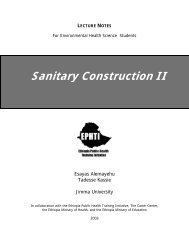Urinalysis - The Carter Center
Urinalysis - The Carter Center
Urinalysis - The Carter Center
Create successful ePaper yourself
Turn your PDF publications into a flip-book with our unique Google optimized e-Paper software.
114<br />
<strong>The</strong>y can be confirmed<br />
by logos iodine.<br />
* To minimize the above mentioned contaminants and artifacts<br />
- Don't use dirty containers, slides and cover slides.<br />
- Don't let urine specimen to open-air.<br />
- Avoid contamination of urine with fats and oils.<br />
- Avoid the drying of sediments.<br />
Methods for Examining Urine Sediments<br />
A. Unstained Urine Sediment<br />
1. Bright field microscopy of the unstained urine sediment<br />
Traditionally, the urinary sediment has been examined microscopically<br />
by placing a drop of urine sediment on a microscopic slide, cover with<br />
cover slide and observing the preparation with the lower and high power,<br />
objective of the bright field microscope.<br />
When the sediment is examined under the bright field microscope,<br />
correct light adjustment is essential, and the light must be sufficiently<br />
reduced, by the correct positioning of the condenser and the iris<br />
diaphragm to give contrast between the unstained structures and the<br />
back ground liquid.<br />
2. Phase Contrasts (PC)<br />
P.C. illumination is useful in the examination of unstained urinary<br />
sediment, particularly for translucent elements such as hyaline casts<br />
and mucus threads, which have a refractive index similar to that of urine<br />
in which they are suspended. Phase contrast has the advantage of<br />
hardening the outlines even the most ephemeral formed elements.<br />
B. Stained Preparation<br />
Cellular detail is best seen with stained preparation.


